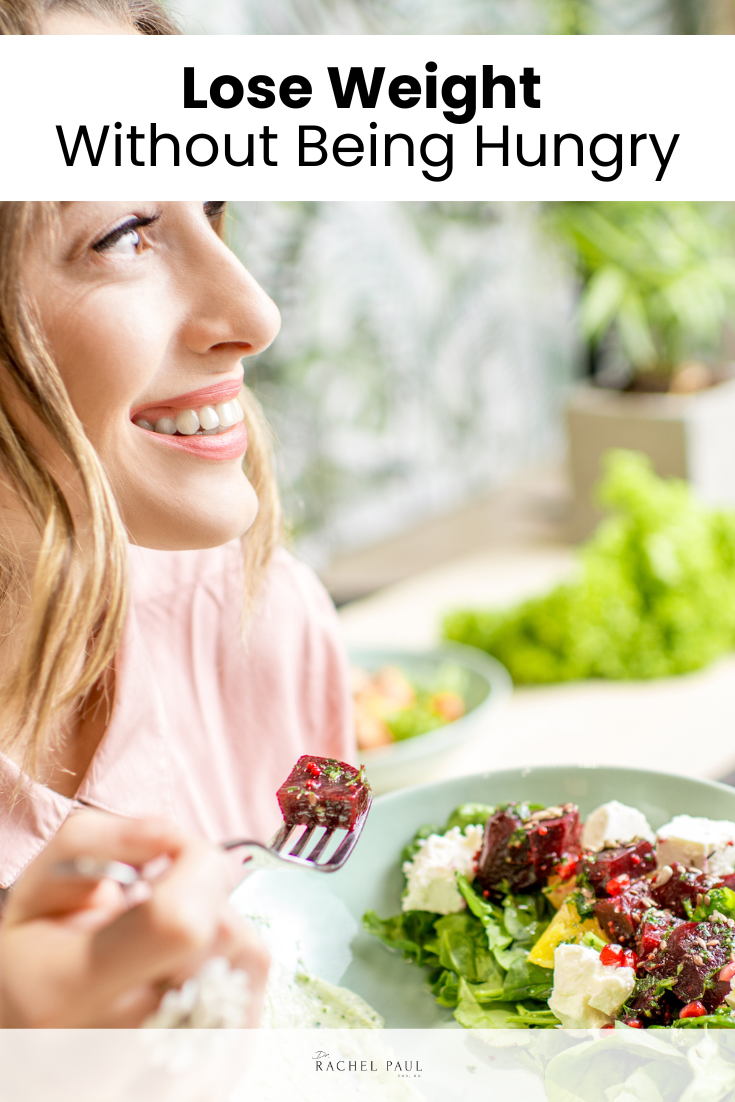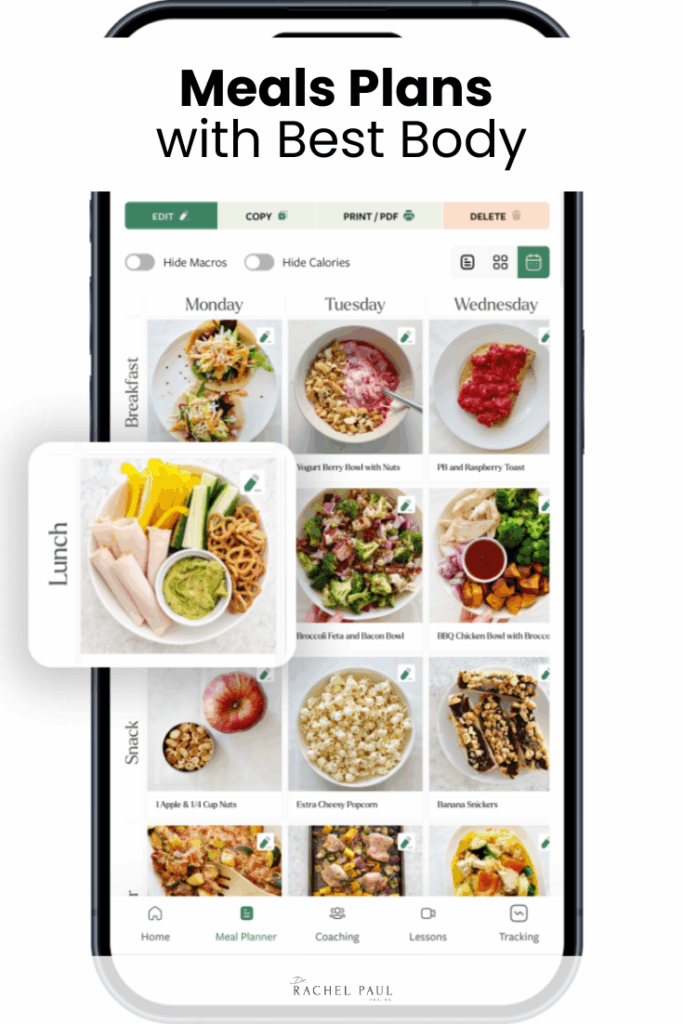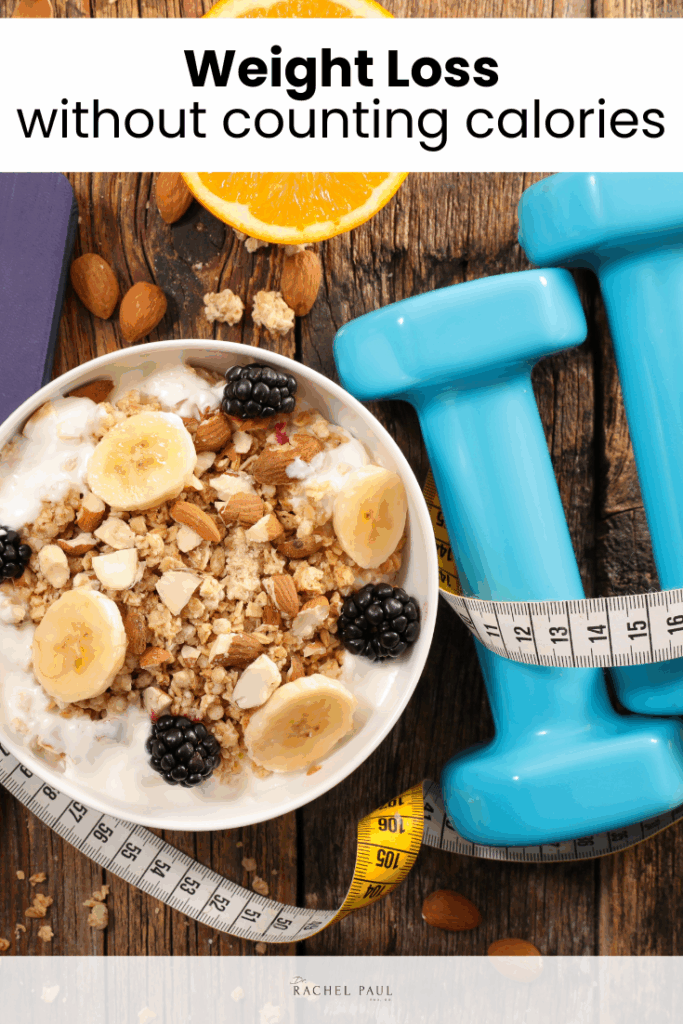One of the biggest myths about weight loss is that it has to feel miserable. If you’re hungry all the time, your plan won’t last. Hunger is one of the most common reasons people give up on diets and regain weight.
The good news? You can absolutely lose weight without being hungry. By using smart strategies like eating high-volume foods, balancing meals with protein and fat, stabilizing your blood sugar, and understanding your body’s hunger cues, you can feel full and satisfied while still reaching your goals. Learn more about effective ways to lose weight by the holidays without feeling deprived.
Below are six strategies to help you stay full, energized, and in control of your food choices without relying on willpower alone.
Don’t Be Hungry While Losing Weight. It’s Unnecessary.
Hunger is not a requirement for weight loss; it’s actually a red flag that your plan might be too restrictive. Constant hunger makes your body crave quick energy (usually sugar or fast carbs), which can lead to overeating and frustration.
Instead, focus on strategies that naturally help your body feel satisfied. By combining lean proteins, healthy fats, high-volume vegetables, and smarter carbs, you’ll prevent blood sugar crashes, control cravings, and create meals you actually enjoy.
Let’s walk through exactly how to do that.
Volume Eating
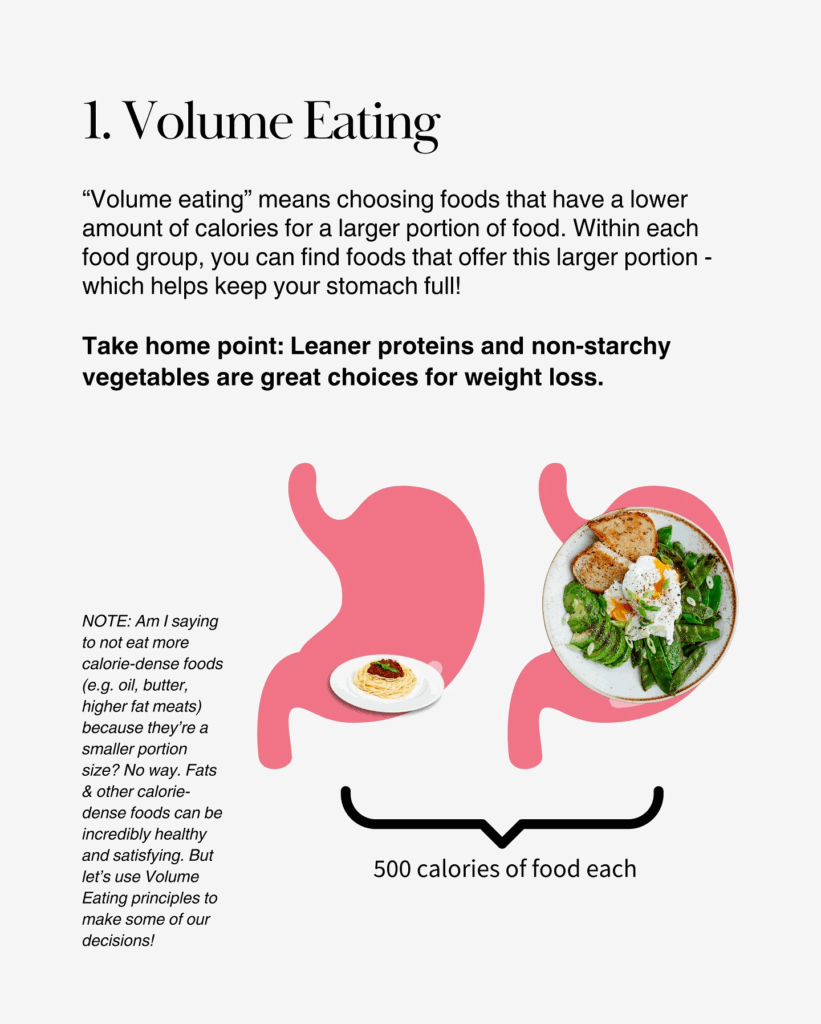
Volume eating is one of the most powerful weight loss tools. It’s about maximizing the amount of food you can eat for the fewest calories. This works because your stomach has stretch receptors. When your stomach fills up, it sends signals of fullness to your brain, regardless of how many calories are in the food.
Best foods for volume eating:
- Lean proteins: chicken breast, shrimp, egg whites, cottage cheese, turkey, cod.
- Non-starchy vegetables: broccoli, zucchini, cucumbers, leafy greens, cauliflower, bell peppers.
- Low-calorie fruits: berries, watermelon, oranges, apples.
Practical example: Instead of 1 cup of pasta (~200 calories), try 2 cups of zucchini noodles sautéed with garlic and olive oil (~70 calories) plus 4 oz grilled chicken. You’ll eat almost three times as much food for fewer calories.
👉 Tip: Start every meal with a base of vegetables. This naturally reduces calorie intake while helping you feel full sooner.
Here are some volume eating examples!
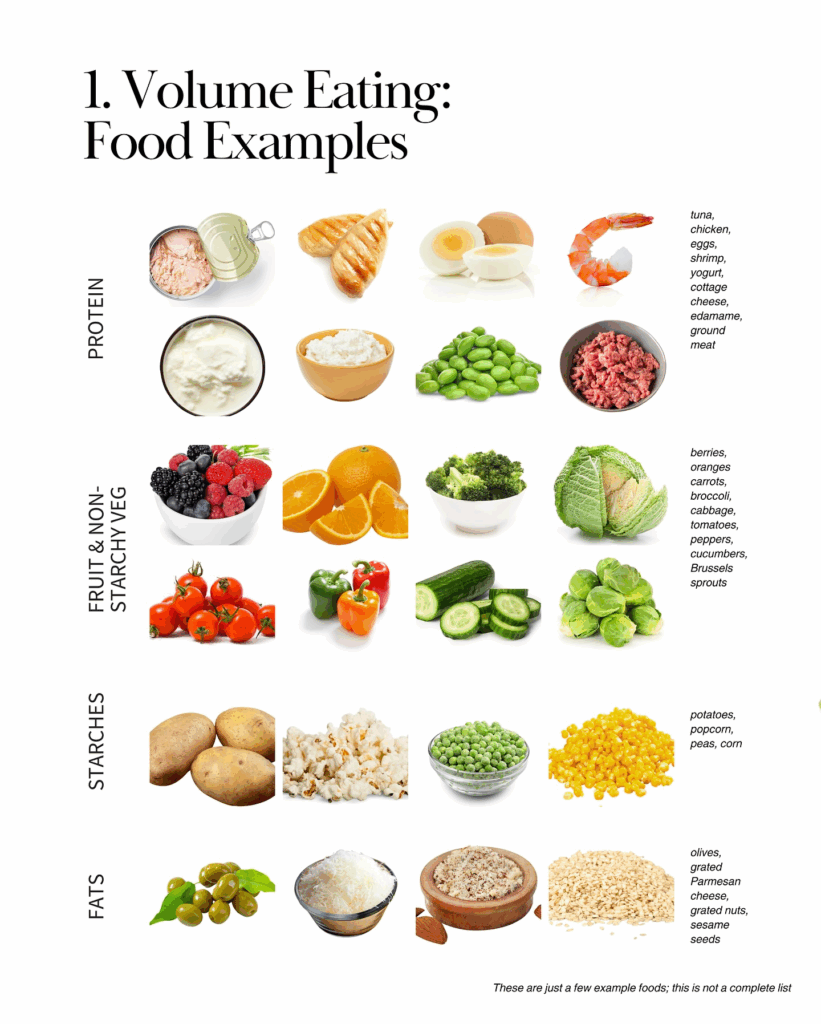
Create Your Meals With Protein, Fat, and Fiber
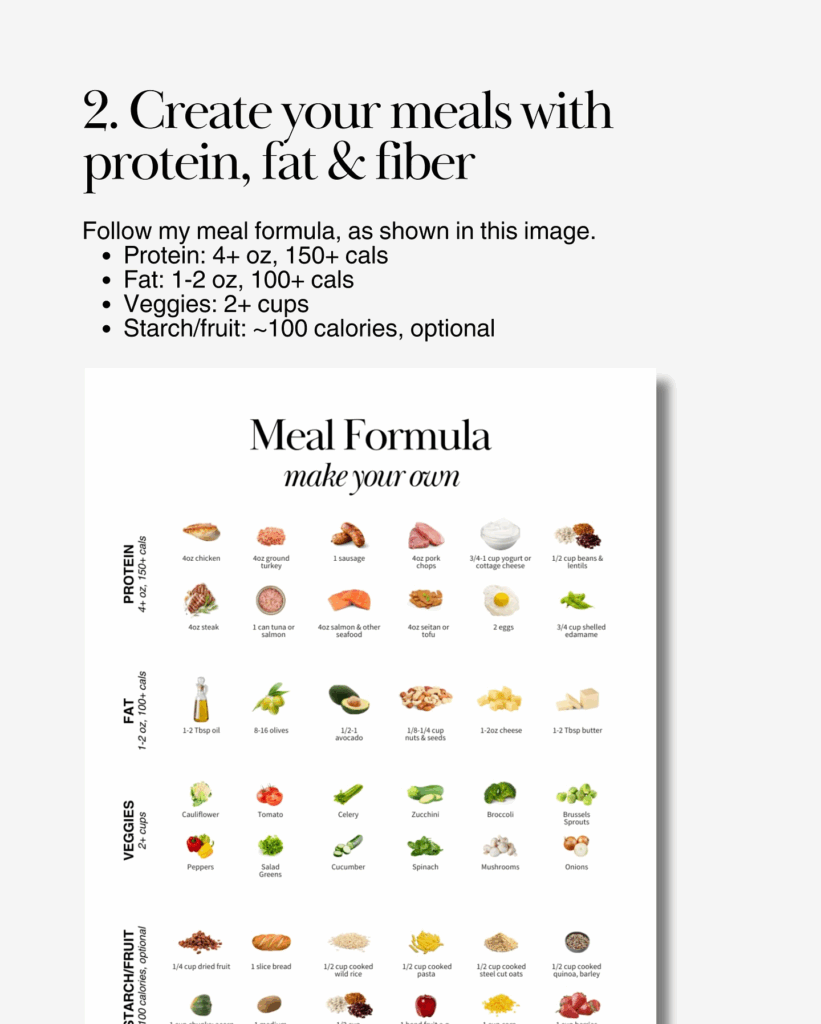
Balanced meals keep hunger at bay for hours. Protein is the most satiating macronutrient, fat slows digestion, and fiber adds bulk to keep you satisfied. When you combine these three, you’ll avoid the rollercoaster of hunger and cravings.
Balanced meal formula:
- Protein (4+ oz, 150+ calories): chicken, ground turkey, salmon, tofu, Greek yogurt.
- Fat (1–2 oz, 100+ calories): avocado, nuts, seeds, cheese, olive oil.
- Vegetables (2+ cups): spinach, cauliflower, salad greens, mushrooms.
- Starch/Fruit (~100 calories, optional): oats, quinoa, potatoes, bread, apples.
Example plate:
- 4 oz salmon (protein + healthy fat)
- 2 cups roasted Brussels sprouts and zucchini (fiber + volume)
- ½ cup quinoa (starch for balance)
This meal provides over 25g of protein, plenty of fiber, and satisfying fat, all while being under 500 calories.
👉 Tip: When in doubt, build meals around your protein first, then add vegetables, then healthy fats, and finish with a small starch if you want it.
Blood Sugar Hacks
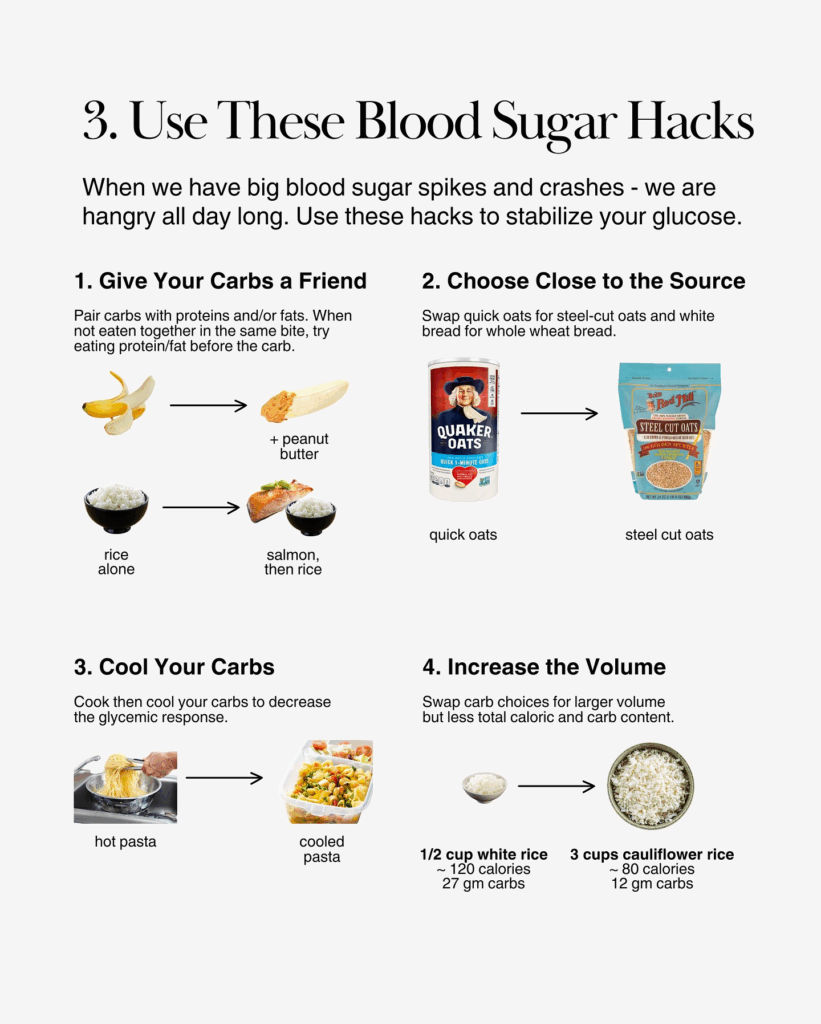
Stable blood sugar is critical for controlling hunger. When blood sugar spikes, it quickly crashes, leaving you tired, irritable, and craving more carbs. By making a few smart swaps, you can keep your energy and hunger steady throughout the day.
Four ways to stabilize blood sugar:
- Pair carbs with protein or fat. Example: banana with peanut butter, rice with salmon, or toast with eggs. Eating carbs alone causes faster spikes.
- Choose less processed options. Whole or steel-cut oats digest more slowly than instant oats, and whole-grain bread is more filling than white bread.
- Cool your carbs. Cooking and cooling pasta, rice, or potatoes forms resistant starch, which lowers the glycemic response. Try using cooled rice for a sushi bowl or cooled pasta for pasta salad.
- Swap for higher volume. Replacing half your rice with cauliflower rice or half your pasta with spiralized zucchini keeps portions large but lowers total carbs and calories.
👉 Tip: If you struggle with afternoon crashes, check your lunch. Adding protein, fat, and veggies can completely change your energy.
Use Liquids

Fluids can help with fullness and satisfaction, especially between meals. Soups and broths, in particular, provide both hydration and bulk without a lot of calories.
Great liquid choices:
- Water or sparkling water with lemon or cucumber
- Unsweetened tea or coffee
- Bone broth or vegetable broth
- Broth-based soups with lots of veggies
- Unsweetened coconut water
👉 Tip: Start meals with a broth-based soup or a large glass of water. Studies show this can help reduce total calorie intake by 10–20% without effort.
Emotional Fullness
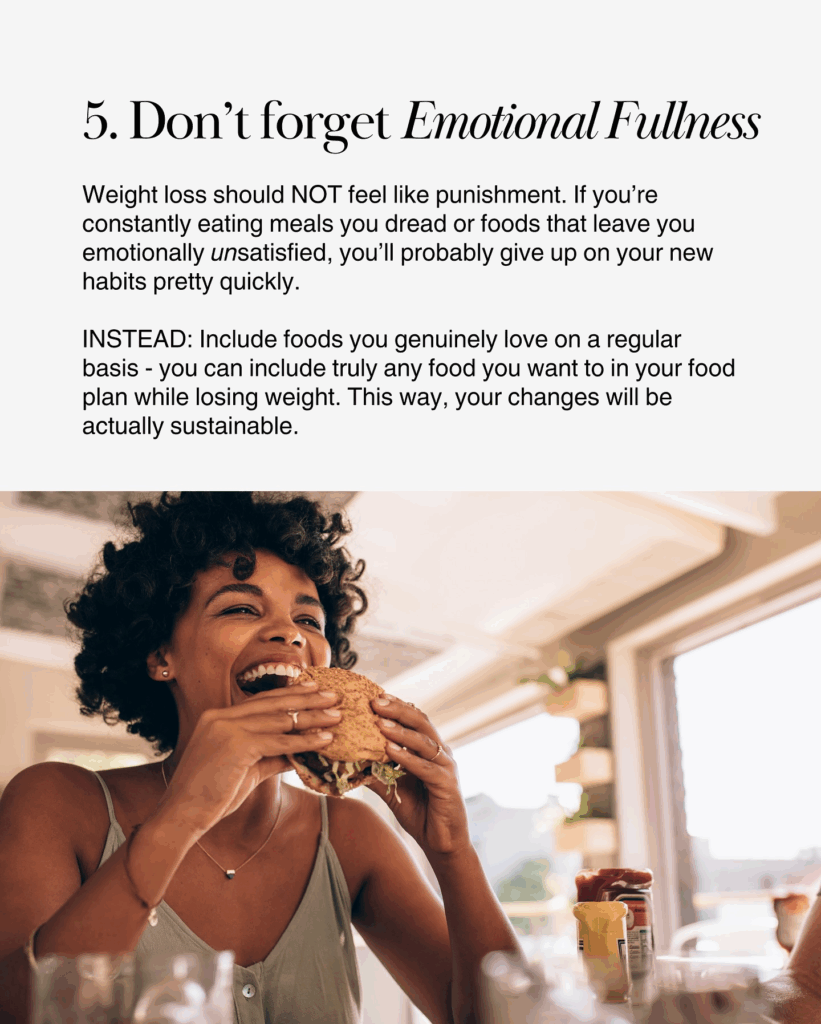
Physical fullness is only one part of the equation. If you never eat foods you love, you’ll eventually feel deprived and overcompensate. Emotional satisfaction is essential for sustainability.
That means it’s okay, even smart, to include a square of chocolate, a burger, or pizza in your plan. When you make space for your favorite foods in moderation, you take away the “forbidden food” mindset, which reduces cravings over time.
👉 Tip: Plan small portions of your favorite foods a few times a week. You’ll enjoy them guilt-free while staying on track.
Learn Your Body’s True Hunger
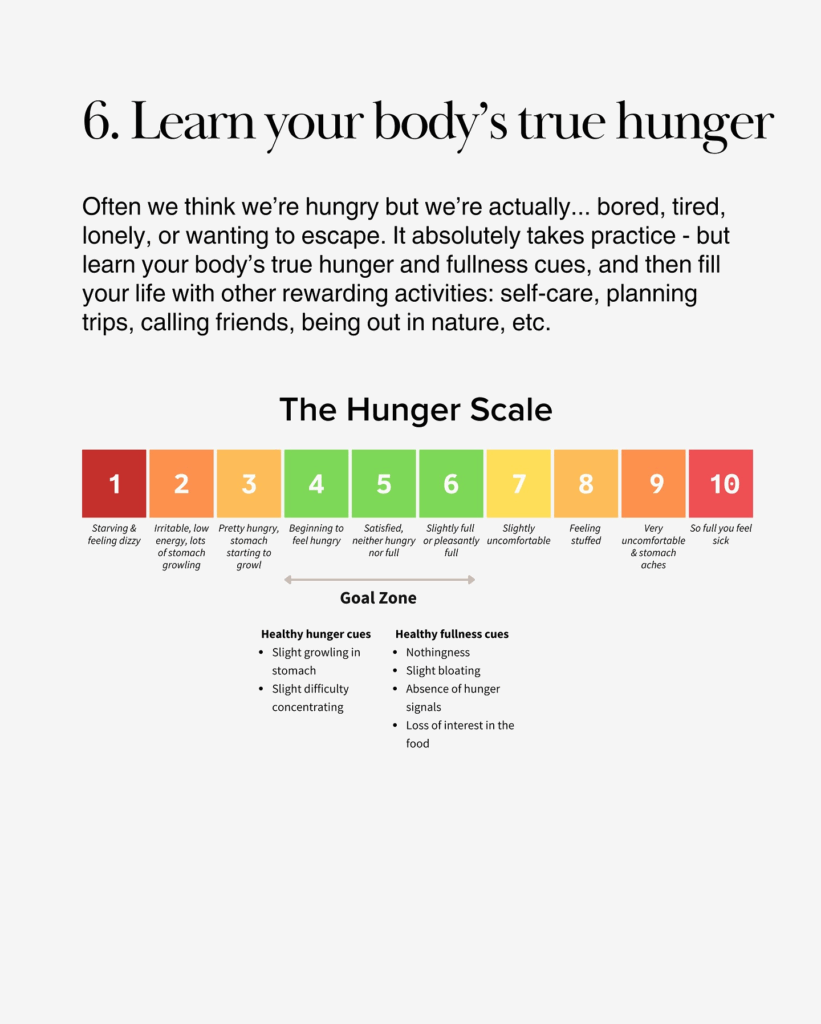
Not all hunger is physical hunger. Often, we eat due to boredom, stress, or habit. Learning to recognize true hunger helps you stop eating when your body doesn’t need fuel.
Use the hunger scale:
- Eat at a 3–4 (hungry, but not starving).
- Stop at a 6–7 (pleasantly full, not stuffed).
Healthy hunger cues: stomach growling, mild difficulty concentrating.
Healthy fullness cues: loss of interest in food, absence of hunger signals, slight bloating.
👉 Tip: If you’re craving something but not physically hungry, try a 10-minute walk, a glass of water, or calling a friend. The urge often passes.
Lose Weight in a Healthy, Sustainable, and FILLING Way
Weight loss does not mean being hungry. By using volume eating, building balanced meals, stabilizing your blood sugar, drinking more filling liquids, eating foods you enjoy, and tuning into your hunger cues, you can lose weight in a way that feels good and actually lasts.
You deserve a plan that keeps you full, satisfied, and confident without the endless hunger and frustration of traditional diets.
